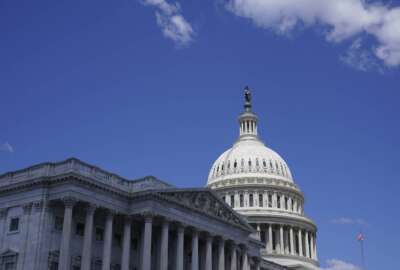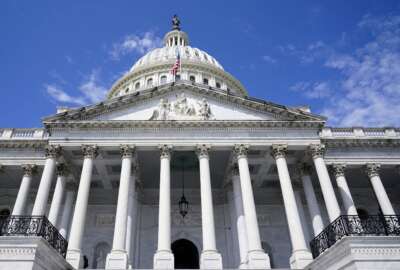
You’re fired! No, you’re not. Hold it, wait a minute…
The case of a dismissed VA chaplain shows how long it can take to resolve an appealed firing.
That dreaded Schedule F nominally established by the Trump administration? The F stands for Fired.
Not really, but the new class of civil servant would have had fewer job protections than everyone else under Title 5, making those designated as Schedule F easier to fire. Schedule F never really got off the ground. The Biden administration undid the executive order on its first day in office, and now there’s a legislative gambit to outlaw Schedule F.
I’m not certain Schedule F necessarily got an objective hearing, but it did highlight an enduring issue for career federal employees. If federal hiring is convoluted and slow, so is removal, as in “You’re fired!”
At least that’s the widely presumed case. If you count the Postal Service but not uniformed members of the military, the executive branch encompasses nearly 2.8 million people, according to the Congressional Research Service. It’s hard to find clear statistics on how many are fired each year, but the Office of Personnel Management pegs the number at around 4,000.
It’s no fun writing about firing, especially today. For two evenings this week, I was steeped in people who represent the best in public service. The Service to America Medals awards took place Tuesday night, organized by the Partnership for Public Service. Wednesday night I was privileged to emcee the annual leadership awards gathering of the Association For Federal Information Resource Management, AFFIRM.
Both affairs highlighted successful career careers. Awards went to feds with highly specialized expertise, such as rocket engineering or infectious diseases, who stick with a single agency for the length of a career. Engineer Greg Robinson, who retired as program manager for NASA’s James Webb telescope, worked at NASA for more than 30 years. Other honors went to those who switch agencies routinely, taking their skills with them. AFFIRM awardee Sheena Burell, for instance, now the chief information officer at the National Archives and Records Administration, has also worked at NASA and the Social Security Administration.
At both affairs, career stars were joined by appointees and a few political types. The latter two categories are also capable of great work. At AFFIRM, Energy Chief Information Officer Ann Dunkin, an appointee, admonished the career technology people to take more risks, and foster a culture where people feel they can take risks. The group also honored outgoing Rhode Island Congressman Jim Langevin (D) for his long-term work in fostering better cybersecurity.
So with some trepidation, I depart from the best in civil service to the dreary topic of firing.
An interesting data point emerged this month from a right-leaning think thank. It’s the result of research conducted by former Trump domestic policy advisor James Sherk, who now directs the Center for American Freedom at the America First Policy Institute. By FOIA request, he obtained files for approximately 400 federal dismissals. The cases concerned members of federal employee unions who grieved their dismissals and chose arbitration rather than appeal to the Merit Systems Protection Board.
Sherk found that arbitrators reinstate fired employees in 60% cases. The MSPB, which publishes its statistics, reinstates people in only 25% of the cases. In an interview, Sherk acknowledged possible variations in the types of cases that each method deals with. That could account for some of the variance. So, too, could bias on the part of arbitrators. As an arbitrator, you’re a paid contractor. If you confirm most of the firings, what employee would agree to have you try the case?
Variance also comes in simply because of the complexity of the statues, regulations and case precedents for federal firing.
Consider a federal chaplain employed by the Department of Veterans Affairs, in this case a Catholic priest. His basis for dismissal was failing to maintain a condition of employment.
During a homily, he said some decidedly un-priestly things. He was fired. Courtesy of this summary by the Shaw Bransford Roth law firm, we know why. Someone reported the comments to an external group called the Archdiocese for the Military Services. This church component issues “ecclesiastical endorsements” that VA requires Catholic chaplains to obtain annually. Other faiths have corresponding bodies. The Archdiocese yanked this particular chaplain’s endorsement, whereupon VA fired him. He no longer maintained a condition for employment as a chaplain. This all took place within two weeks.
The priest appealed to the MSPB. An administrative law judge (ALJ) upheld the dismissal. On appeal, so did the board itself. The final nail came just a couple of weeks ago.
The Shaw Bransford summary shows the many “outs” an employee can claim if he or she feels the dismissal was wrongful. There was no due process violation on the government’s part, because the removal of the condition of employment — the ecclesiastical endorsement — was between the priest and the Archdiocese. The priest didn’t prove bias, at least not the legally required “intolerably high” bias, on the part of an admittedly tough supervisor — whom the priest had called an ugly hypocrite. (My advice: Don’t do that.)
Nor did the priest convince the the MSPB that the agency failed to do an adequate investigation before reporting his homily transgressions to the Archdiocese. He’d boasted about physically assaulting teenagers who stole from a VA facility. During the appeals he said he’d made it up, and VA should’ve asked him about it before reporting him. But that brought the judges back to the endorsement, in which, judges said, the priest had no “property or liberty interest.”
They wrote, “…the agency could properly rely on the appellant’s loss of his ecclesiastical endorsement as the basis for its action.” Pretty cut and dried. Many cases aren’t quite as simple, where there are judgements about performance or the fine points of due process. So maybe the essential question doesn’t concern the merits of the firing process but rather why it takes so long.
Here’s the thing. The Archdiocese withdrew the priest’s endorsement in October 2013. Disposition of the case by the ALJ took place in 2017. Because the MSPB had no quorum for a few years, the final decision came out two weeks ago. That’s nine years of legal limbo.
The priest may know how the MSPB judged, but we can’t be sure. He died in 2021.
Nearly Useless Factoid
The autumnal equinox almost always takes place on Sept. 22 or 23. In 1931, however, the equinox occurred on Sept. 21 and it will again in 2092. In 2303, the first day of fall will land on Sept. 24.
Source: Reader’s Digest
Copyright © 2025 Federal News Network. All rights reserved. This website is not intended for users located within the European Economic Area.
Tom Temin is host of the Federal Drive and has been providing insight on federal technology and management issues for more than 30 years.
Follow @tteminWFED




